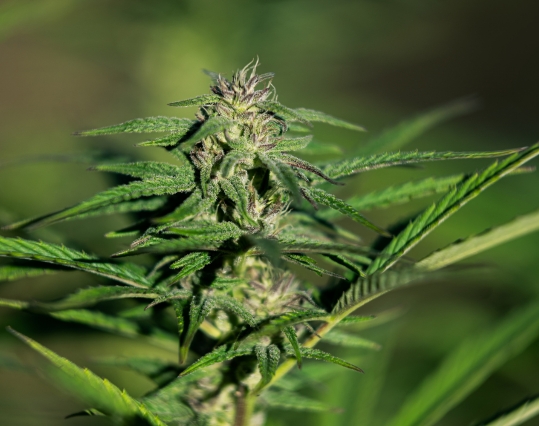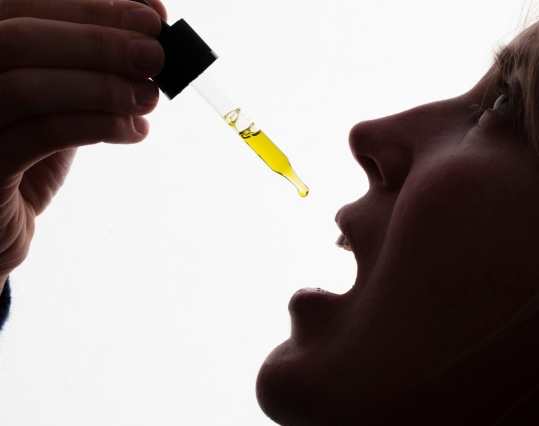
Understanding Terpenes in CBD: An Essential Guide

This informative article explores the science behind terpenes, their diverse profiles, and how they contribute to CBD’s aroma, flavour, and potential therapeutic benefits. Readers will learn how to choose CBD products based on their desired effects and preferences.
This guide is invaluable for enhancing your understanding of terpenes and maximising the benefits of CBD flowers.
Terpenes in CBD
Terpenes play a significant role in CBD products’ composition and potential benefits. These organic compounds are found in various plants, including cannabis plants, and are responsible for the unique aromas and flavours associated with different strains. In addition to their sensory qualities, terpenes also contribute to CBD’s therapeutic effects by interacting with the body’s endocannabinoid system.
There are over 200 different cannabis terpenes, each with its own distinct properties and potential benefits. For example, the terpene linalool, commonly found in lavender, has been shown to have relaxing and calming effects. Limonene, found in citrus fruits, may have mood-enhancing and stress-relieving properties. Pinene, abundant in pine trees, has been associated with improved focus and alertness.
When combined with CBD, terpenes can create the “entourage effect.” This refers to the synergistic interaction between cannabinoids and terpenes, which can enhance the overall therapeutic potential of CBD products. By incorporating specific terpenes into CBD formulations, manufacturers can tailor their products’ effects to meet consumers’ needs and preferences. Individuals can select products that align with their desired effects by considering the specific terpene profiles of different CBD strains.
Types of Terpenes
Terpenes are responsible for the distinctive smells and flavours associated with different strains of CBD.
Some of the most commonly found terpenes in CBD include:
- Myrcene: This terpene is known for its earthy and musky aroma. It is often found in high concentrations in indica strains and is believed to have sedative and relaxing effects.
- Limonene: As the name suggests, this terpene has a citrusy aroma. It is found in abundance in sativa strains and is thought to have mood-enhancing and stress-relieving properties.
- Pinene: This terpene has a pine-like scent and can be found in both sativa and indica strains. It is believed to have anti-inflammatory and bronchodilator effects.
- Linalool: Known for its floral, lavender-like aroma, linalool is often associated with calming and relaxing effects. It is commonly found in cannabis and other plants, such as lavender.
- Caryophyllene: This terpene has a spicy and peppery aroma. It is unique because it can also interact with the body’s endocannabinoid system, potentially enhancing the effects of CBD.
Understanding CBD’s different types of terpenes can help consumers choose strains that align with their desired effects and preferences. Terpenes work synergistically with other compounds in CBD, such as cannabinoids, to potentially produce the overall therapeutic effects.
Extraction and Processing
The extraction of terpenes from CBD involves several methods, with each method having its own advantages and disadvantages. One common method is steam distillation, where steam is used to separate the terpenes from the plant material. Another method is solvent extraction, where a solvent, such as ethanol or butane, is used to dissolve the terpenes. This method is often used for large-scale production but can leave behind residual solvents if not properly removed.
After extraction, the terpenes undergo further processing to ensure purity and quality. This includes filtration to remove any impurities, such as plant matter or solvents, and winterisation to remove fats and waxes. The terpenes are then typically tested for potency and purity before being used in CBD products.
It is important to note that the extraction and processing methods can affect the terpene profile of the final CBD product. Different extraction methods may result in different concentrations and compositions of terpenes, which can influence the product’s aroma, flavour, and potential therapeutic effects.
Health and Wellness
Many people turn to CBD as a natural alternative to traditional medications, seeking relief from various conditions. While research is still ongoing, some studies suggest that CBD may have analgesic, anti-inflammatory, and anti-anxiety effects.
One of the reasons CBD is believed to have these therapeutic properties is because of its interaction with the body’s endocannabinoid system (ECS). The ECS plays a crucial role in regulating various bodily functions such as pain perception, mood, appetite, and sleep. CBD is thought to interact with the ECS, potentially promoting balance and homeostasis.
It’s important to note that while CBD shows promise in promoting health and wellness, it is not a cure-all. It’s always best to consult with a healthcare professional before incorporating CBD into your wellness routine, especially if you have any underlying health conditions or are taking medications.
Legal and Regulatory Aspects
The legality of CBD varies from country to country. In the UK, CBD derived from hemp is legal as long as it contains trace amounts of THC, the psychoactive compound from the cannabis plant.
In the European Union, CBD is considered a novel food ingredient, and the European Food Safety Authority (EFSA) regulates its use and sale. CBD products must undergo a rigorous approval process to be legally marketed as a food supplement. Labelling requirements, quality control standards, and permissible THC levels can also vary across different regions. Choosing CBD products from a reputable company that is transparent about where their CBD comes from and provides third-party lab testing results is essential.

User Guides and Tips
Understanding terpenes in CBD is essential for maximising the benefits of CBD products. By understanding terpenes, users can choose CBD products that best suit their needs and preferences.
It is important to understand the different effects different terpenes have. For example, the terpene myrcene has sedative properties, while limonene has uplifting and energising effects. By researching the specific terpenes present in a CBD product, users can select strains that align with their desired outcomes.
Users should consider the entourage effect, which refers to the synergistic interaction between cannabinoids, terpenes, and other compounds in the hemp plant. CBD products that contain a diverse range of terpenes may offer enhanced therapeutic benefits compared to products that only contain CBD isolate.
Users should experiment with different strains and terpene profiles to find what works best for them. Keeping a journal of their experiences can be helpful in identifying patterns and preferences.
Scientific Research and Studies
Scientific research and studies have provided valuable insights into the effects and potential benefits of terpenes in CBD products. These studies have revealed that terpenes, the aromatic compounds found in plants, not only contribute to the unique scent and flavour of CBD but also play a crucial role in its therapeutic properties.
One study published in the British Journal of Pharmacology found that terpenes interact with the body’s endocannabinoid system, enhancing the effects of CBD and other cannabinoids. The researchers discovered that terpenes can influence neurotransmitters in the brain, leading to various effects such as relaxation, pain relief, and improved mood.
Another study conducted by researchers at the University of Mississippi found that certain terpenes, such as myrcene and linalool, possess anti-inflammatory and analgesic properties. These findings suggest that terpenes may contribute to CBD’s potential anti-inflammatory and pain-relieving effects.
Moreover, terpenes have been found to have antimicrobial, antioxidant, and neuroprotective properties, making them potentially beneficial in treating various conditions, including neurodegenerative diseases and cancer.
Industry Trends and Innovations
Terpenes in CBD have sparked a wave of industry trends and innovations, revolutionising the way CBD products are formulated and consumed. As more research emerges on the potential benefits of terpenes, CBD manufacturers are incorporating these aromatic compounds into their formulations to enhance the therapeutic effects of their products. Terpenes contribute to the aroma and flavour of CBD products and offer unique health properties that complement the effects of CBD.
One of the key industry trends is the focus on strain-specific CBD products. By selecting and isolating specific terpenes found in different cannabis strains, manufacturers can create CBD products that mimic the effects and flavours of popular strains such as Blue Dream or OG Kush. This allows consumers to have a more tailored and personalised CBD experience.
Another trend is the emergence of full-spectrum CBD products. These products contain not only CBD but also other cannabinoids, terpenes, and flavonoids found in the hemp plant. The combination of these compounds creates an “entourage effect,” where the therapeutic benefits of each component are enhanced when used together.
Innovations in CBD delivery methods are also taking place. Manufacturers are exploring new ways to administer CBD, such as transdermal patches, inhalers, and even CBD-infused beverages. These innovations provide consumers with more options for incorporating CBD into their daily routines.
FAQs and Myth Busting
No, terpenes are not exclusive to cannabis. They can be found in various plants, fruits, and herbs and contribute to their distinct aromas and flavours.
Yes, terpenes have been found to have potential therapeutic benefits. They can contribute to the entourage effect, enhancing the overall effects of CBD and other cannabinoids.
No, terpenes themselves do not have psychoactive properties and will not get you high. The psychoactive effects are primarily caused by THC, not terpenes.
No, terpenes vary in their chemical composition and can affect the body differently. Each terpene has its own unique aroma and potential therapeutic properties.
Yes, terpenes are commonly used in aromatherapy due to their pleasant scents and potential therapeutic effects. They can help promote relaxation, uplift mood, and reduce stress.
Yes, terpenes can interact with other compounds in CBD, such as cannabinoids and flavonoids. This interaction can influence the overall effects and benefits of CBD products.
Terpenes are not exclusively found in CBD products. They are organic compounds that are found in various plants, including cannabis and hemp. Terpenes are responsible for the aroma and flavour profiles of these plants. In CBD products, terpenes work synergistically with other cannabinoids to produce what is known as the “entourage effect,” which may enhance the overall therapeutic benefits. It’s important to note that terpenes are not unique to CBD and can be found in many other natural substances.
Yes, terpenes can be used in other products besides CBD. Terpenes are natural compounds found in various plants, including cannabis and fruits. They are known for their aromatic properties and can be used in the production of essential oils, perfumes, and flavourings. Terpenes are also used in the food and beverage industry to enhance flavours and aromas. Additionally, terpenes have potential therapeutic benefits and are being explored for their use in skincare products, aromatherapy, and alternative medicine.
Terpenes are generally considered safe for consumption. They are natural compounds found in various plants, including cannabis and hemp. Terpenes contribute to CBD products’ aroma, flavour, and potential therapeutic effects. However, individual sensitivities and allergies may vary. As with any dietary supplement, it is advisable to consult with a healthcare professional before adding terpene-rich CBD products to your routine.
While terpenes are known for their strong scents and potential therapeutic properties, they do not have psychoactive effects on their own. However, when combined with cannabinoids like CBD, terpenes can enhance the plant’s overall therapeutic benefits. This synergistic interaction is known as the entourage effect. Understanding the role of terpenes in CBD products is essential for maximising their potential benefits and tailoring the experience to individual preferences.
While terpenes have not been extensively studied in combination with other herbal remedies, they have shown promise in providing potential health benefits when used in isolation. However, further research is needed to fully understand the potential interactions and effects of combining terpenes with other herbal remedies. As always, it is advisable to consult with a healthcare professional before incorporating any new herbal remedies into your wellness routine.